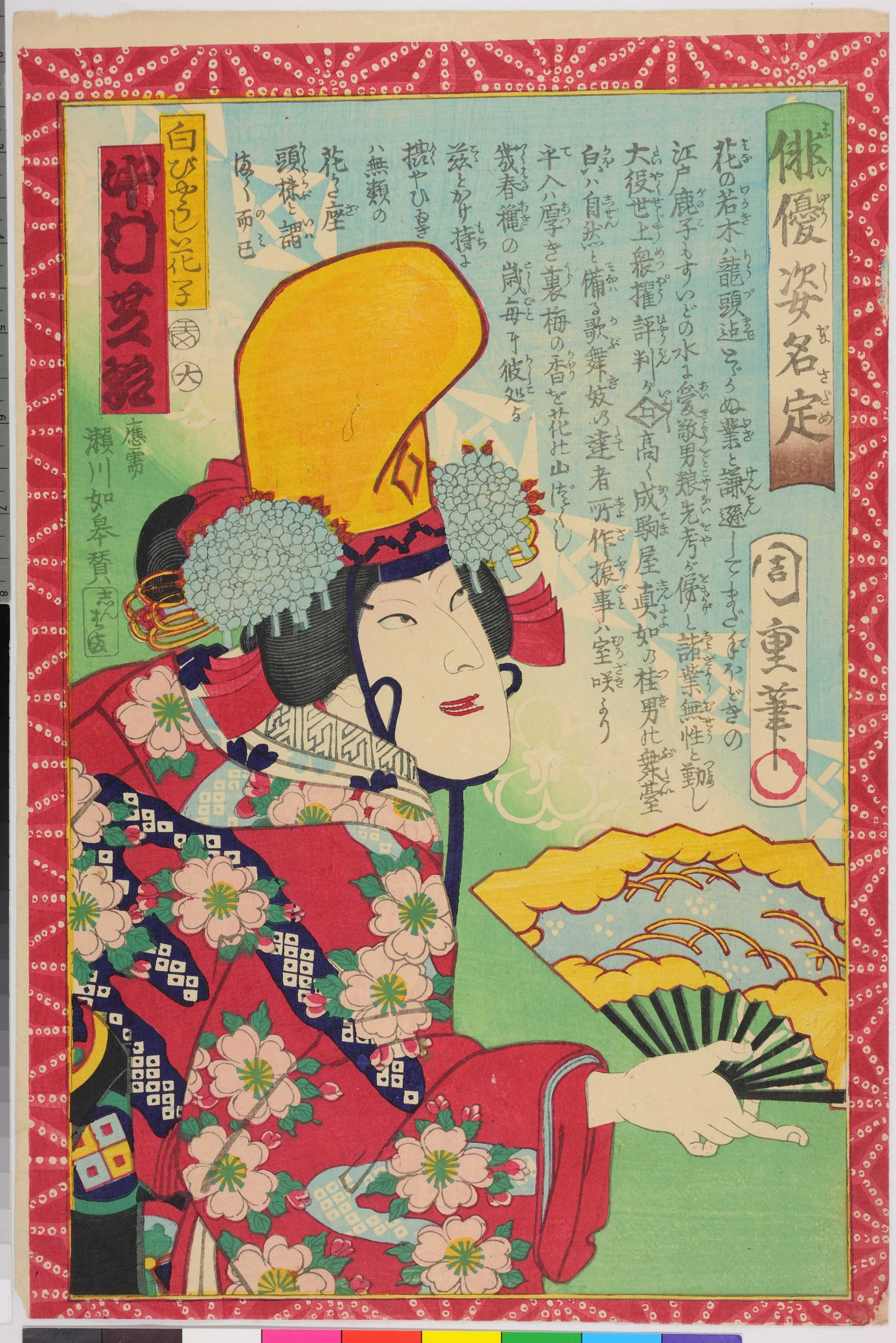H10 Hikinuki: Dojyoji
-
"Haiyu Shinasadame ""Shirabyoshi Hanako Nakamura Shikan"
Artist: Chikashige Oban, Colour print
Published: October 1874(Meiji 7), in Tokyo
Ritsumeikan Art Research Center (arcUP3722)
This Yakusha-e (actors print) depicts Nakamura Shikan the forth (18331-1899) plays Shirabyoshi dancer Hanako in "Kyoganoko Musume Dojyoji" whose highlight scenes are quick costume changes onstage. The technique for the surprising transformation is called "Hikinuki". An actor wears a layered Kimono which are the outer basted with the beneath. When the assistant pulls out the thread which has a knob on the end, the outer garment got apart and the under appears.
"Hikinuki" is mainly used to enhance stage effects when a character reveals his/her true identity or to give visual variety to dance programs, such as "Kyoganoko Musume Dojyoji". This quick transformation can also indicate a sudden change in character's disposition to audiences in effective ways. There were same devices which showed costume change onstage also in theatrical arts prior to Kabuki, such as Noh, Gagaku (dance and music performance for the court rituals), and puppet plays. However, to show its quickness and surprising transformation while an actor keeps acting is a characteristic method of Kabuki.
"Kyoganoko Musume Dojyoji" is a representative dance program among the programs feature the technique "Hikinuki". In this program, a lady in a Shirabyoshi dancer costume which is an Eboshi hat and a Furisode (Kimono for young ladies) appears on the Dojyoji temples' ground. She came to there to dedicate her dance to the restored temple bell which relates to a Noh program "Dojyoji". As she performs dances one after another, she quickly changes her costumes onstage. At the same time, her disposition transforms from a professional dancer to an innocent lady in love which is her original identity as a heroine of the Noh program "Dojyoji". (,)[Glossary]
-

- 投稿日:
- by 8P
- カテゴリ: H Performance and Stage Effect
- [編集]